It’s hard to imagine given how small this scruffy little plaza is today, but there used to be a whole building on top of Chicago’s Polish Triangle. Even the term "Polish Triangle" is a relatively recent coinage, dating to the 1960s or 1970s. There's a reason Nelson Algren and his ilk always called the area Polish Downtown and Division Street Polish Broadway–until the Klee Bros. building was torn down, the triangular shape of the lot wasn't a particularly visible part of the cityscape.
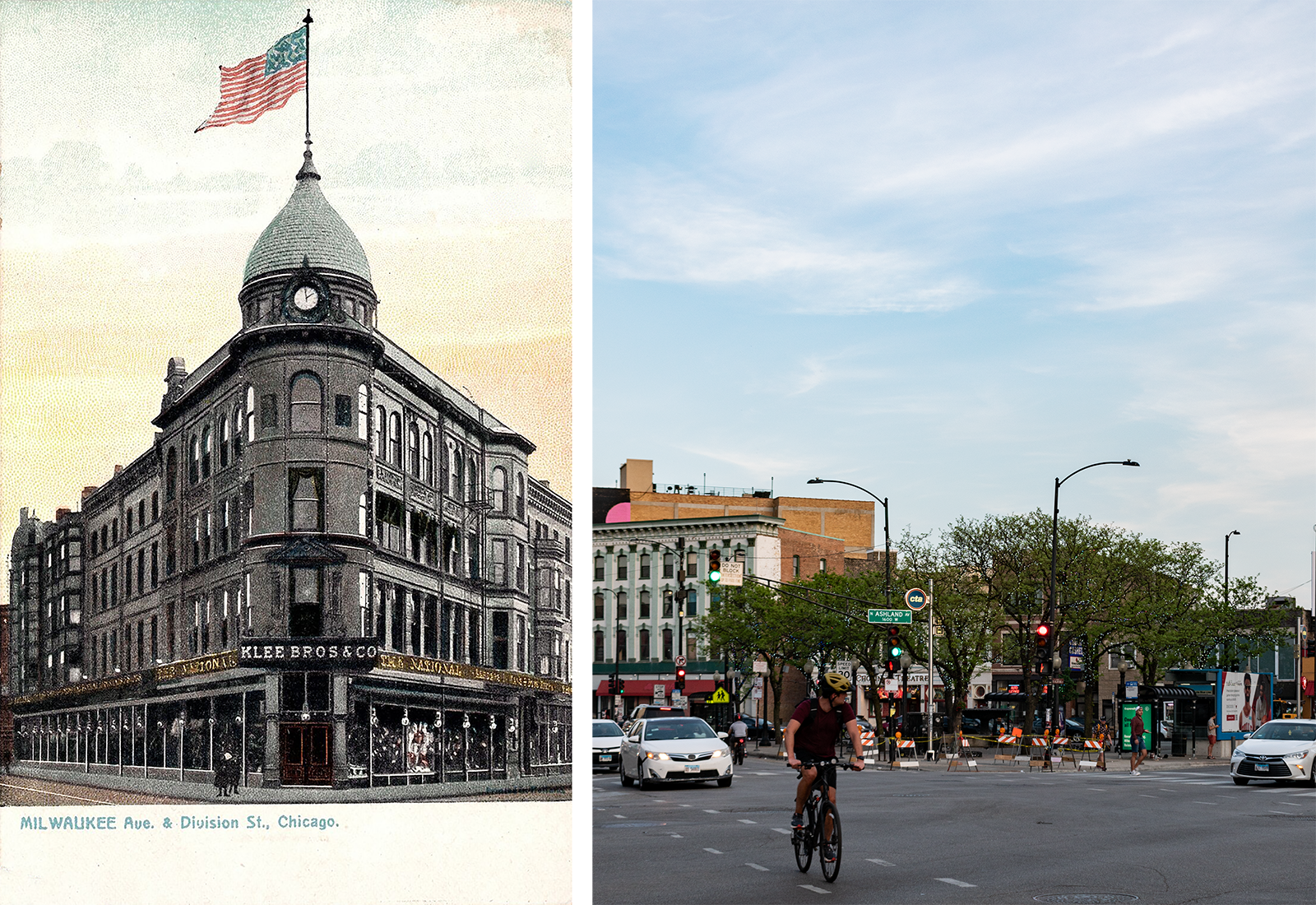
The Klee Brothers "building" on the present-day Polish Triangle was actually a complex made up of a few buildings mostly built in the 1880s and 1890s. The block was originally home to a variety of stores, offices, and apartments, but it looks like clothing stores were the most common. The Klees, whose presence on the block dates to 1891, were the clothiers who won out, eventually taking control of the entire block.
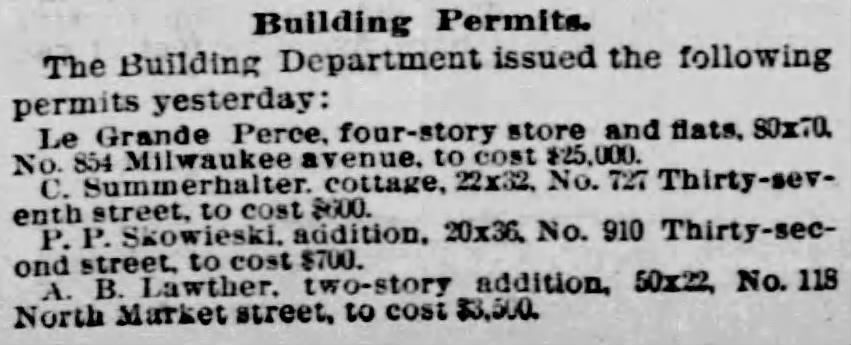


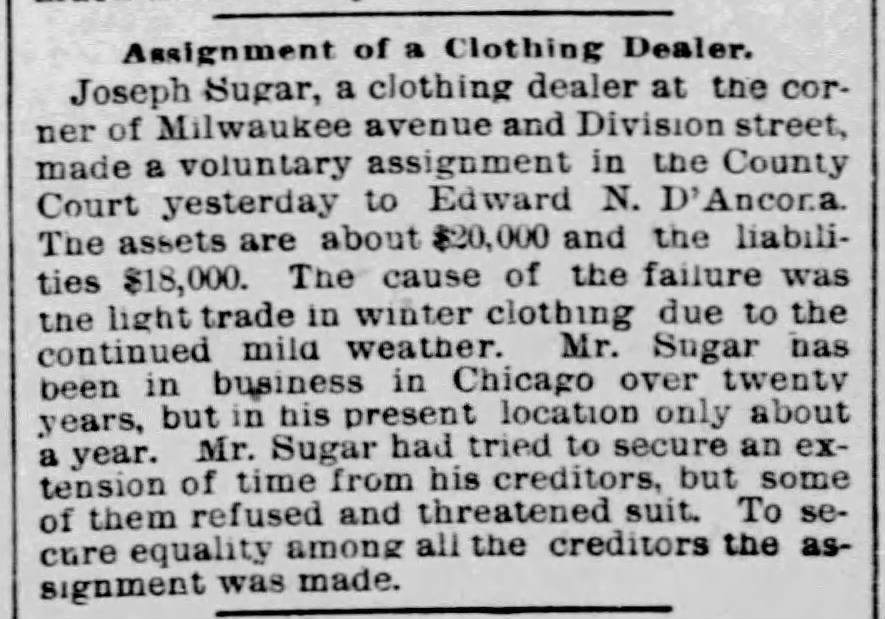


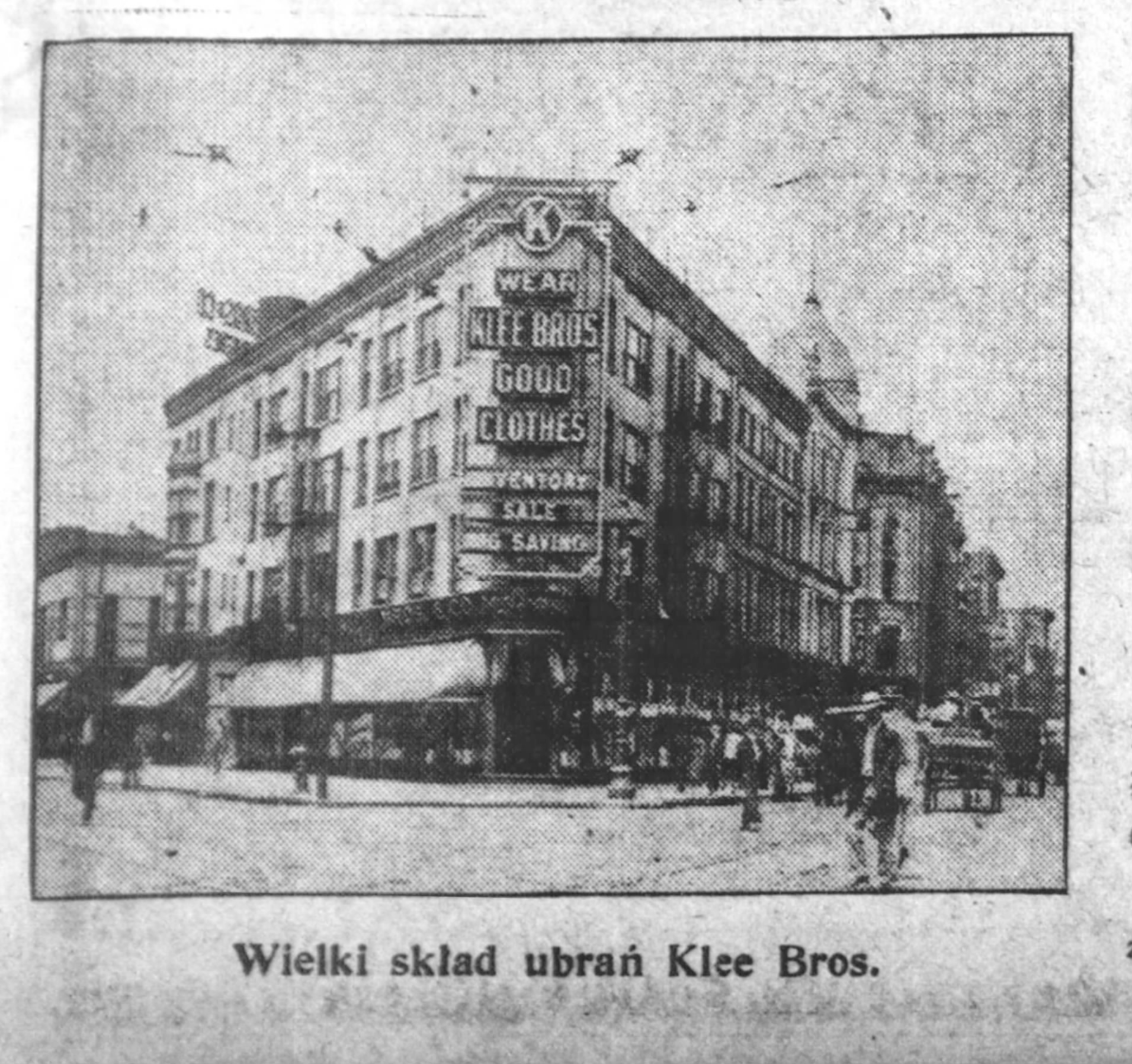
I believe the building in the postcard–which, the postcard is mislabeled, the Milwaukee/Division corner of the complex didn’t have a big round turret, it was this one, the north elevation–was constructed for Henry Ludolph in 1895. Ludolph started as a clothier as well, before diversifying into carriages (this was his carriage store), undertaking (?!), and politics. He was elected 16th ward alderman in 1897, but after only a few months in office Ludolph was killed by a Chicago & Northwestern train at Cortland and Ashland (before the tracks were raised–these are now the Metra UP-NW tracks).

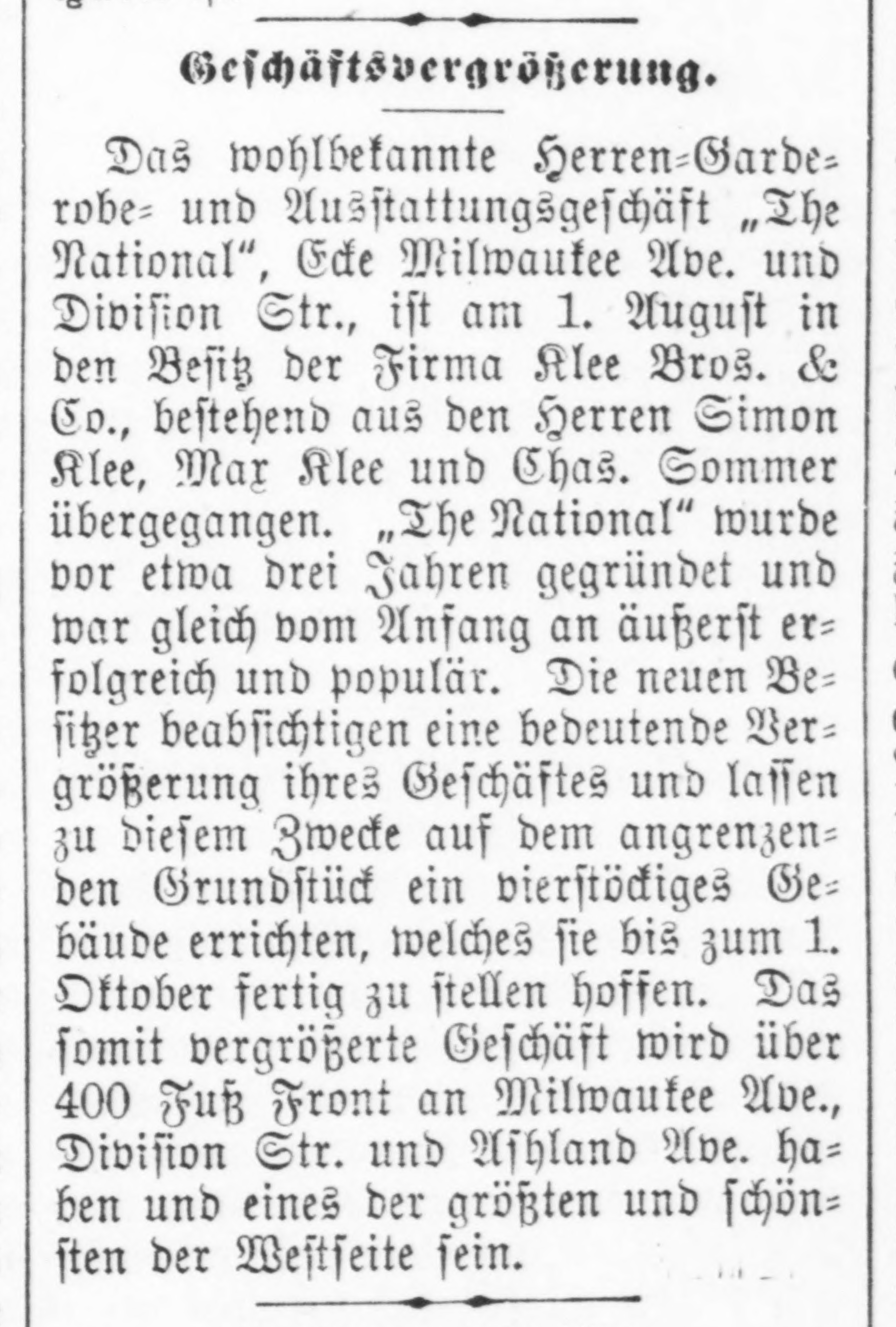
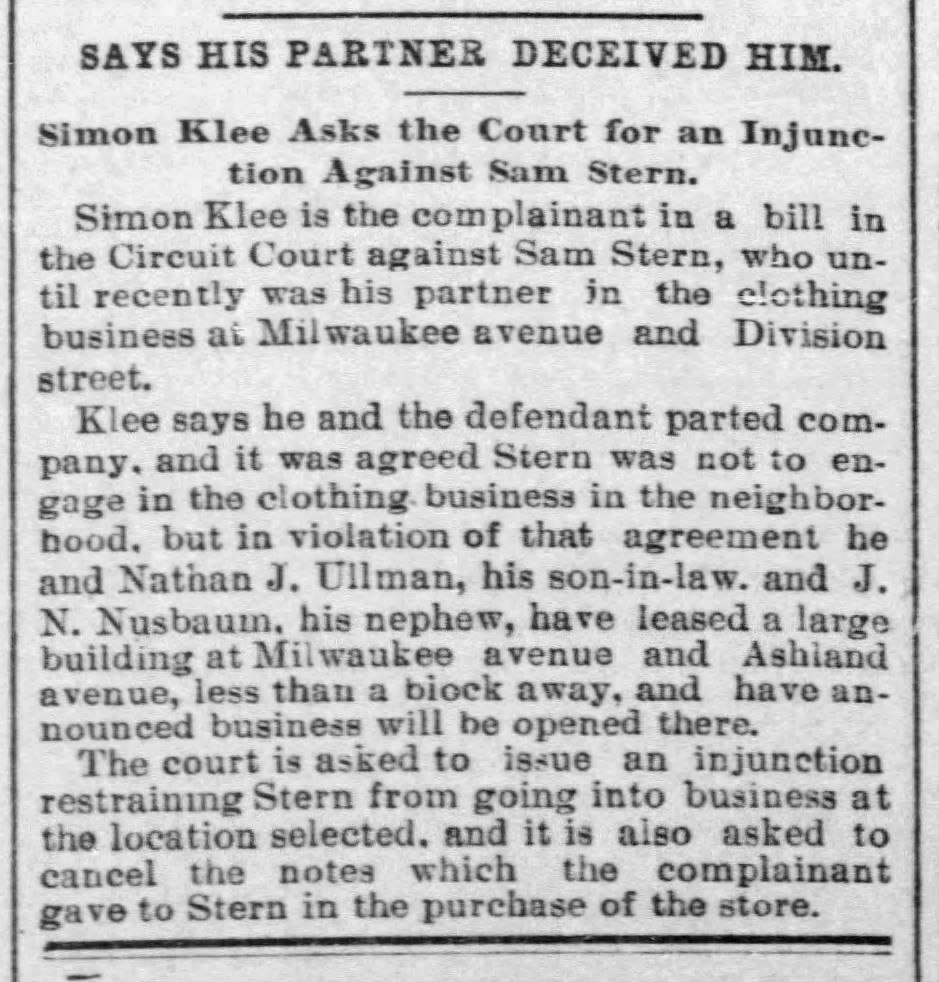



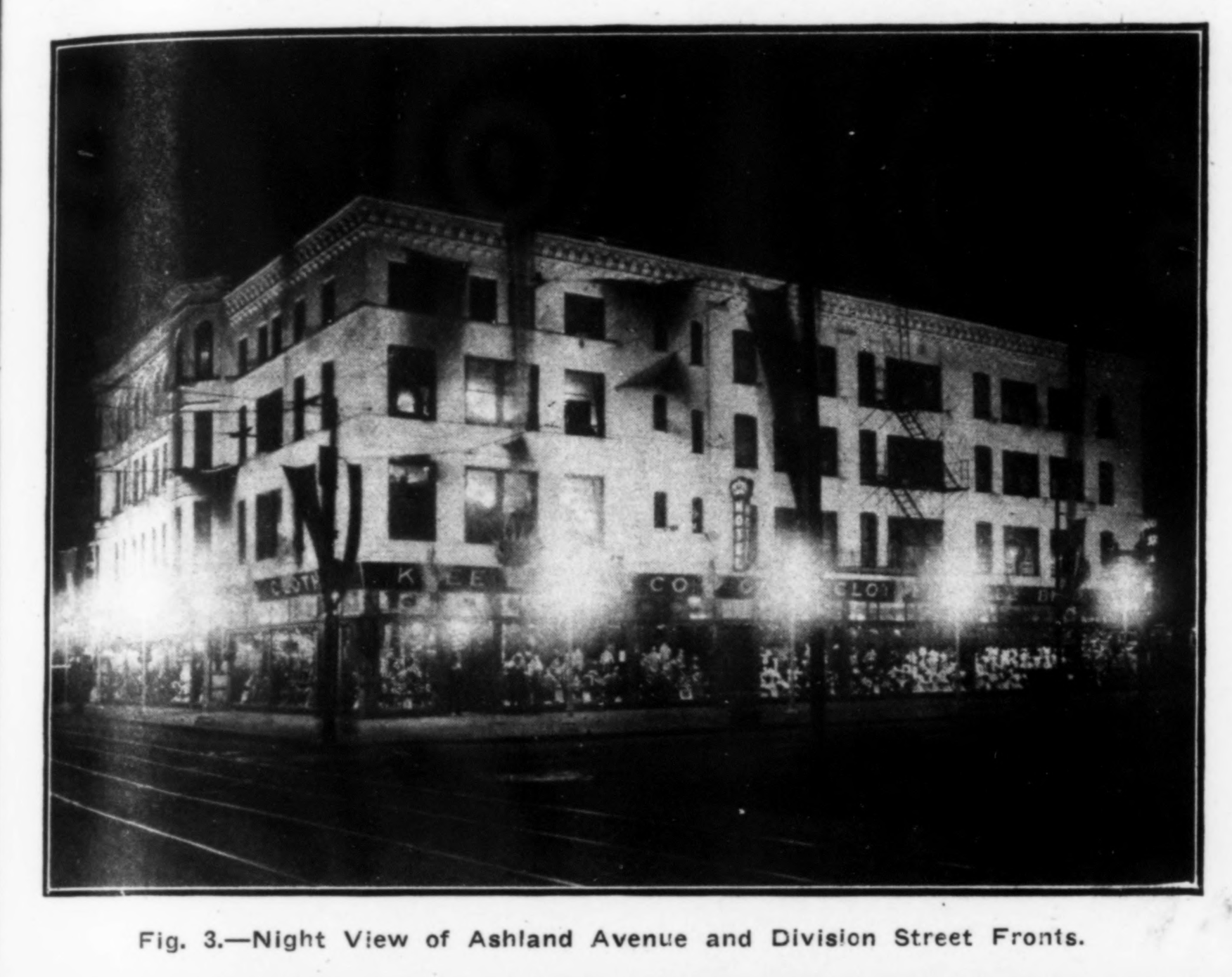

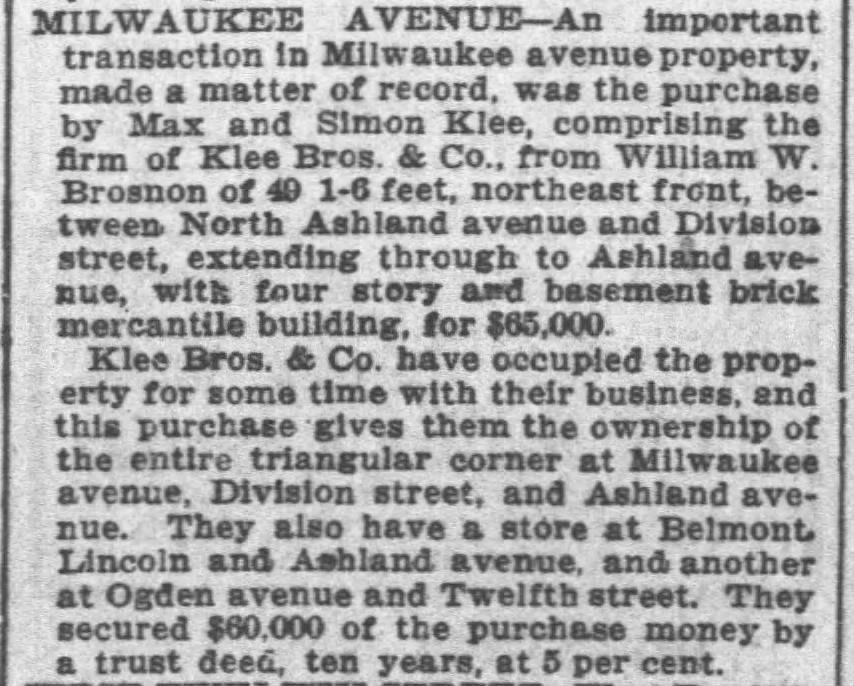
A men’s clothing store, author Saul Bellow described Klee Bros. & Co. as a place where you got a free baseball bat with the purchase of a two-pants suit (...honestly, no fucking clue what that implies). After opening The National Store here in 1891 the Klees, brothers Simon and Max, started to expand to adjacent storefronts in 1895. By 1910 the store, first as Klee Bros. National Clothier and then just Klee Bros., had swallowed up the entire block.
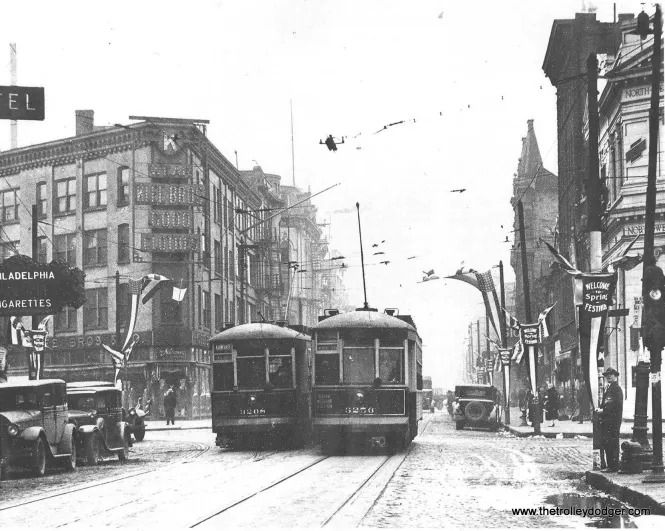
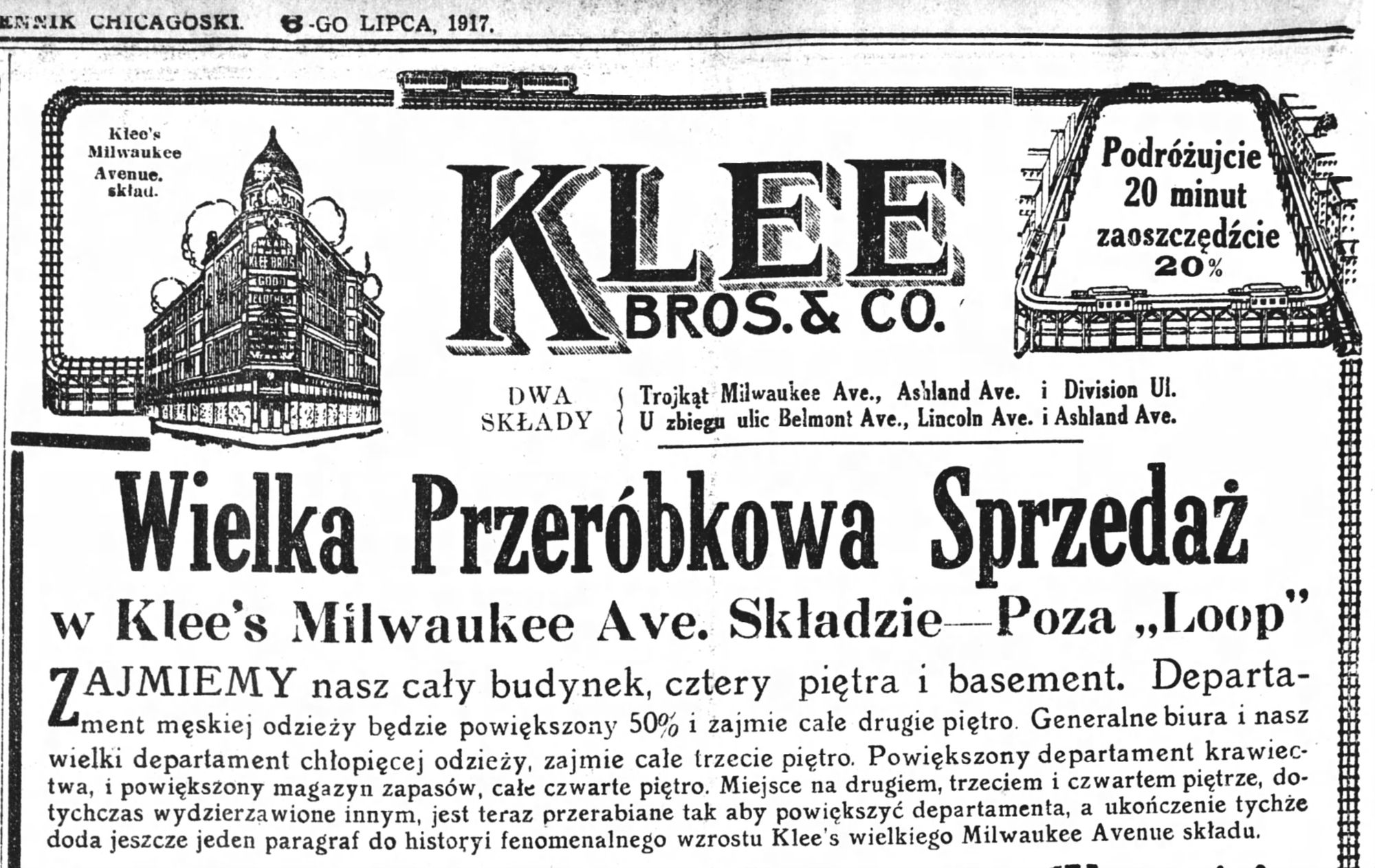
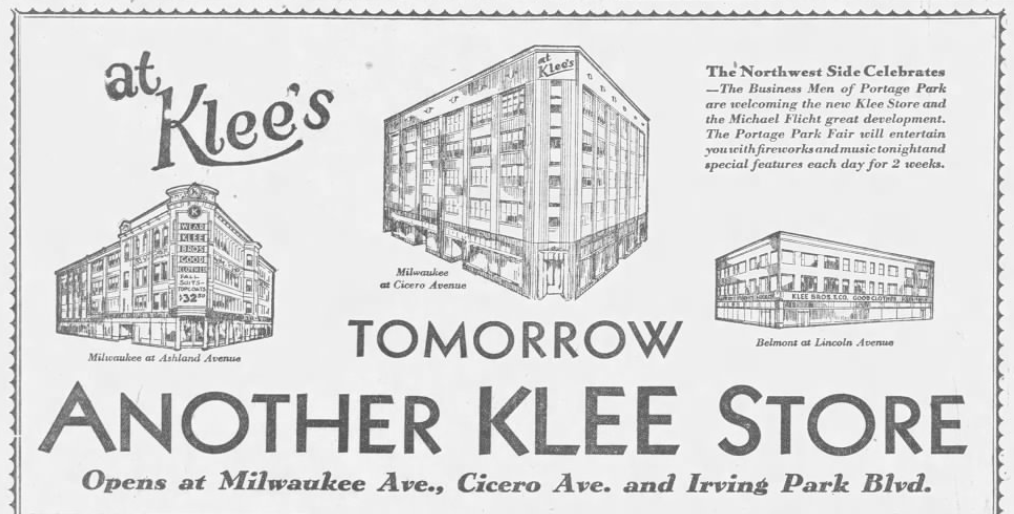
This was the Klees' main office as they opened new stores at Lincoln/Belmont/Ashland in Lakeview and Six Corners in Portage Park, and flirted with never-built developments in Englewood and Lincoln Square. The unique shape of their first store may've influenced the company's later stores–they’re also all on irregular lots. Intentional or coincidental, the Klees clearly liked Chicago’s diagonals.
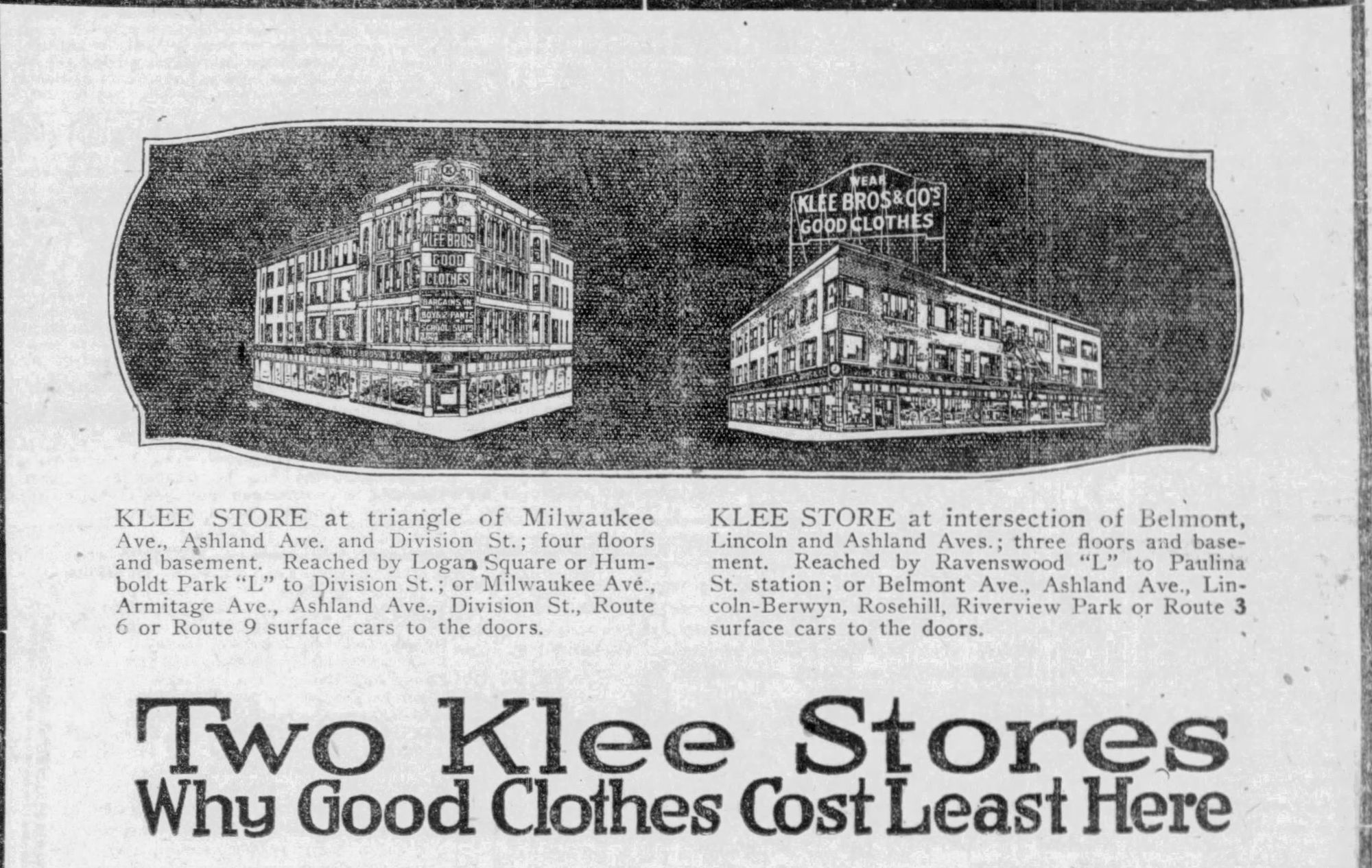
The building lost its turret sometime between 1913 and 1920, but it was the widening of Ashland Avenue for cars that eventually killed the building. Part of a wave of street widenings that chopped up and demolished buildings across Chicago, with the Reid Murdoch Building perhaps the most famous example, the widening of Ashland took a big chunk out of the building's west side (it's why the Polish Triangle seems too small for a building today).
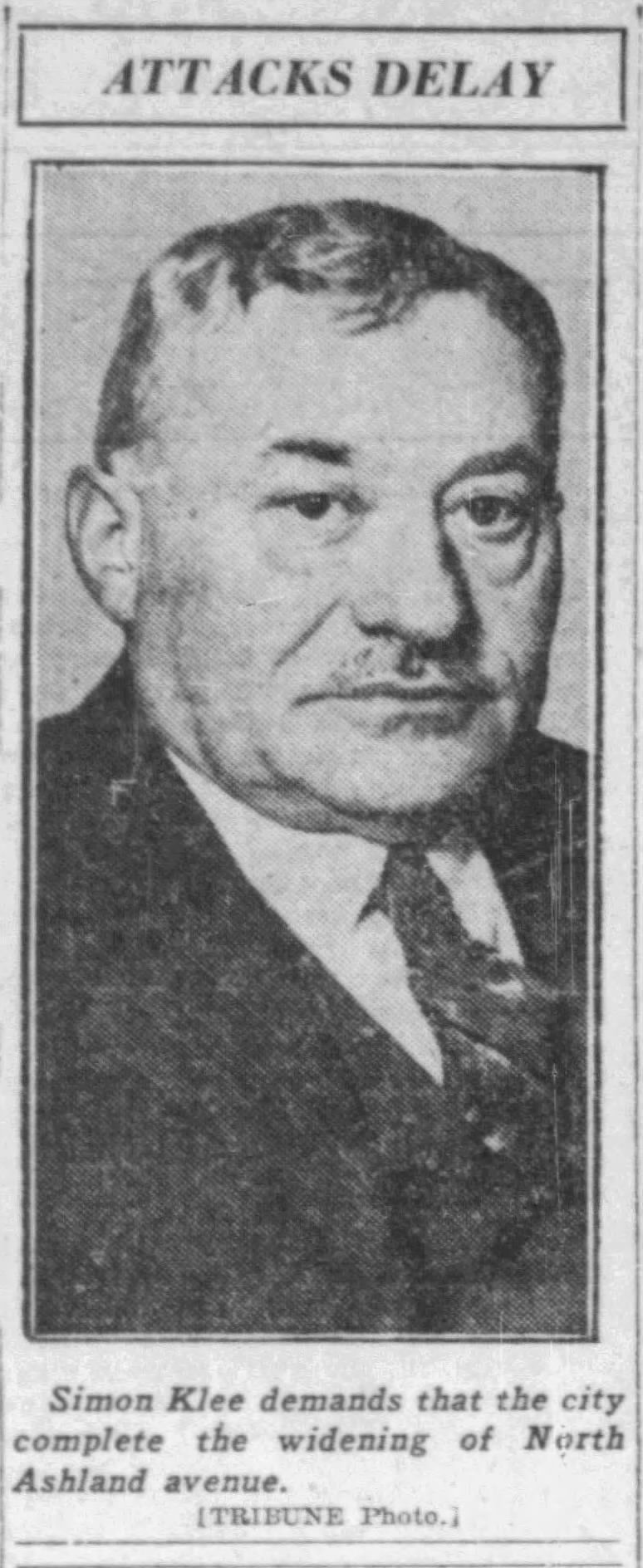


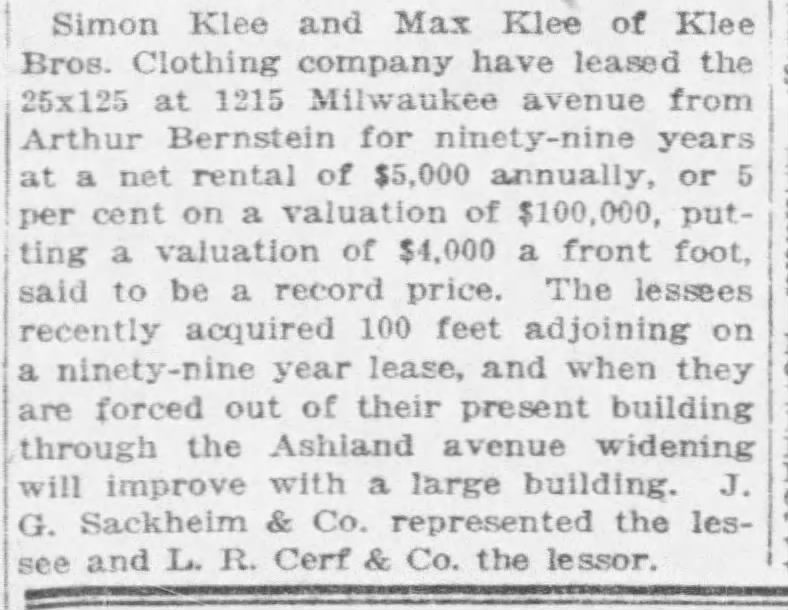
A little unexpectedly, some of the loudest proponents of the widening were Simon and Max Klee themselves–maybe partially out of exasperation? Work on widening Ashland began in the early 1920s, and by 1926 city had condemned the buildings that stood in the way–they either needed to move or they'd have their fronts cut off when the street was widened. In anticipation, Klee Bros. rented space across the street. However, three years later and nothing had happened, resulting in a jumbled streetscape with some buildings set back, others still flush with the curb, some buildings moved, some demolished, many empty–no one wanted to rent on Ashland, given the uncertainty.
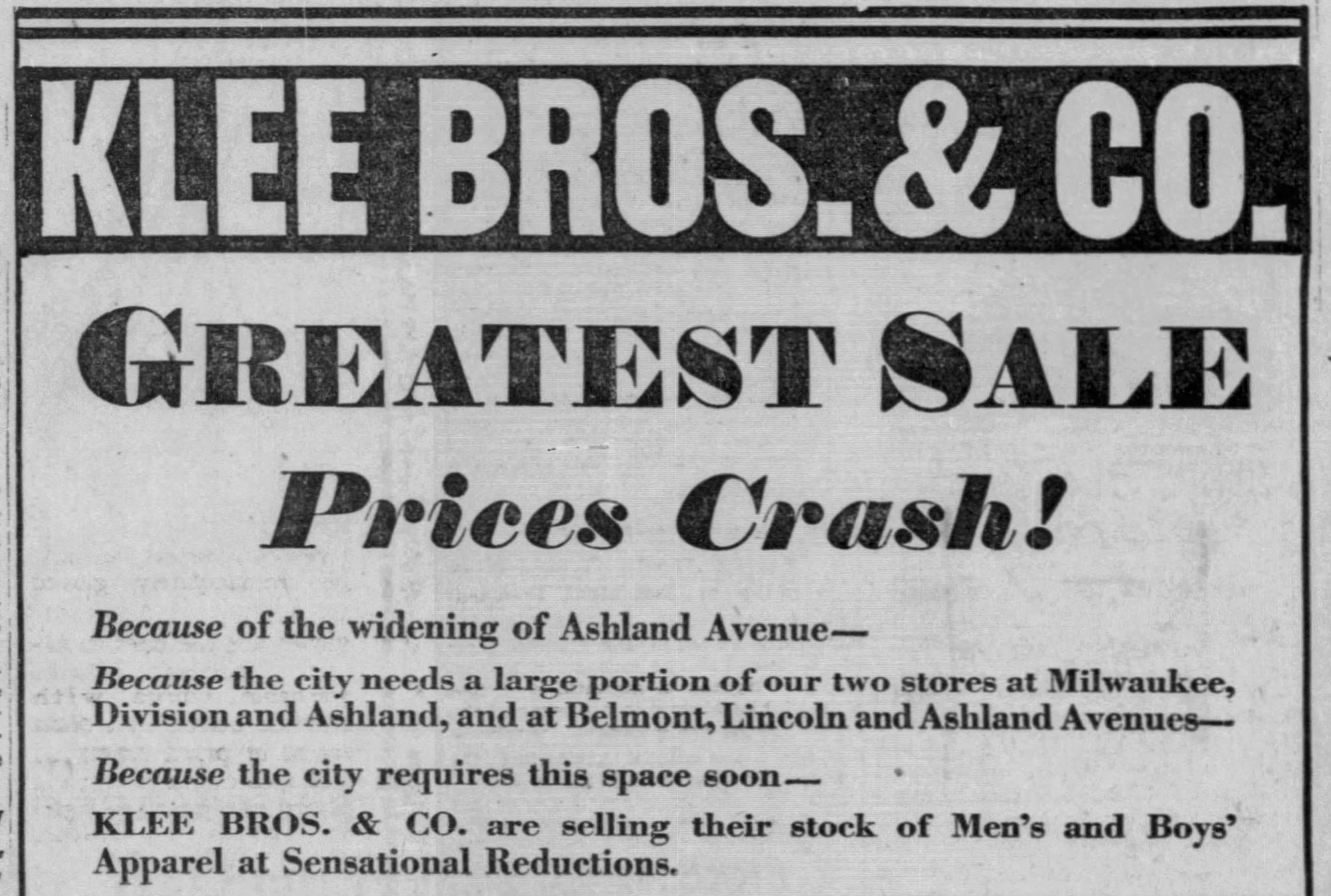
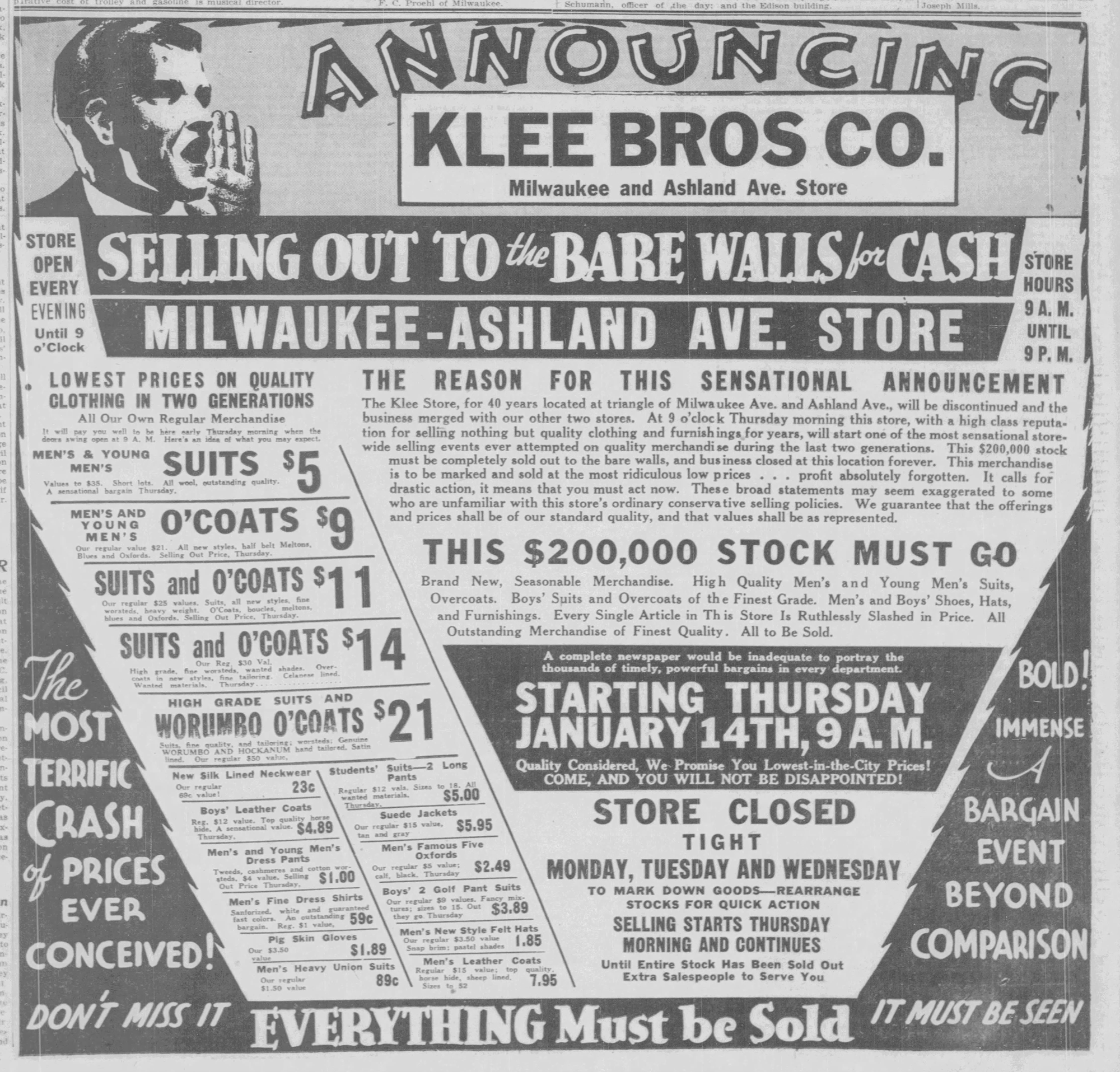
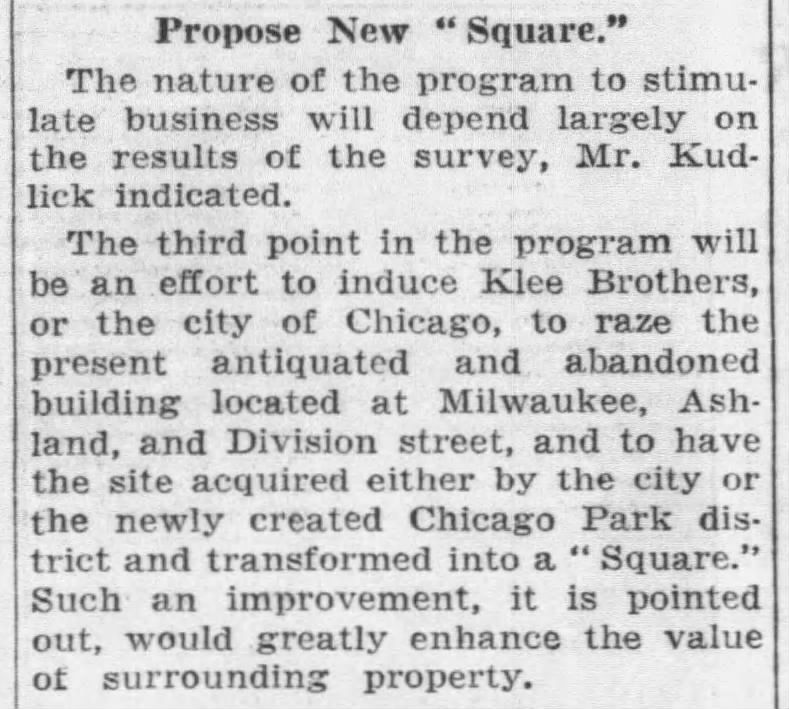
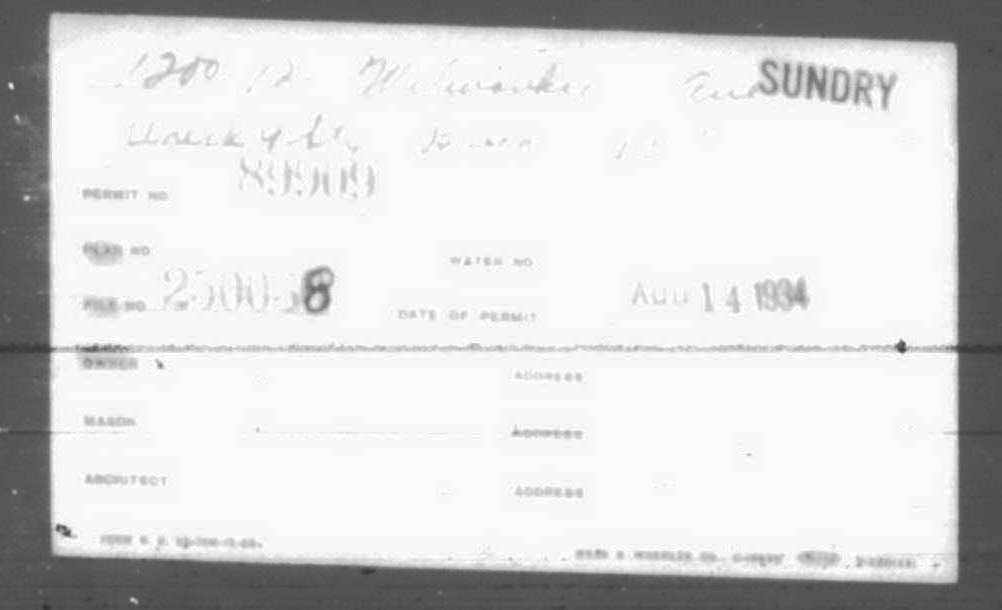
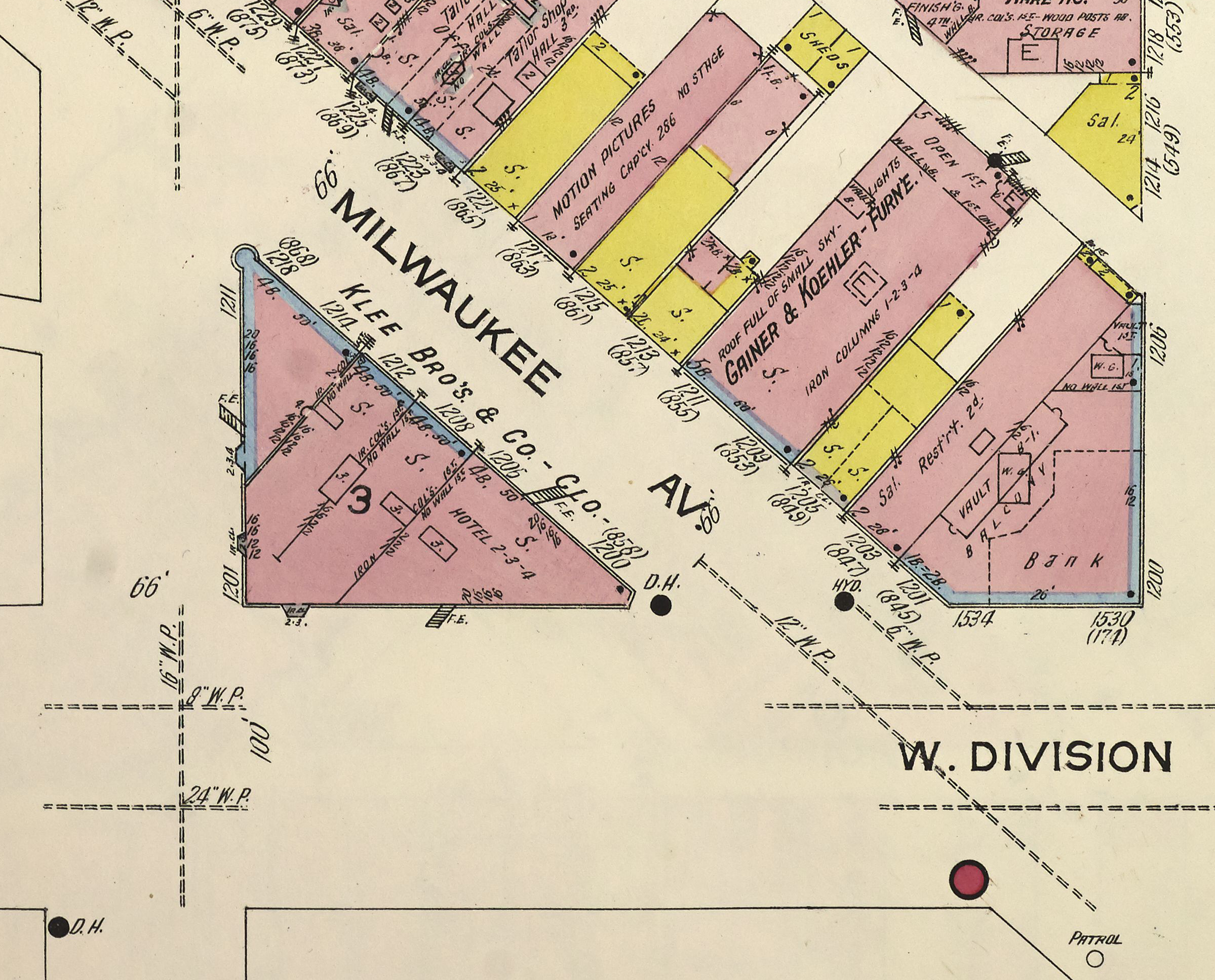
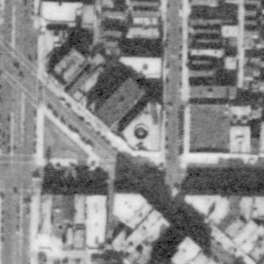
The city ultimately lopped off a slice of the Klee Bros. building when they widened this stretch of Ashland around 1930 or so, rendering it too small for retail and commercially unviable. After a 31 year run at the heart of Polish Downtown, Klee Bros. had a liquidation sale here in January 1932. The building, a dismembered and vacant “eyesore”, lingered until 1934 (I think), when it was demolished.
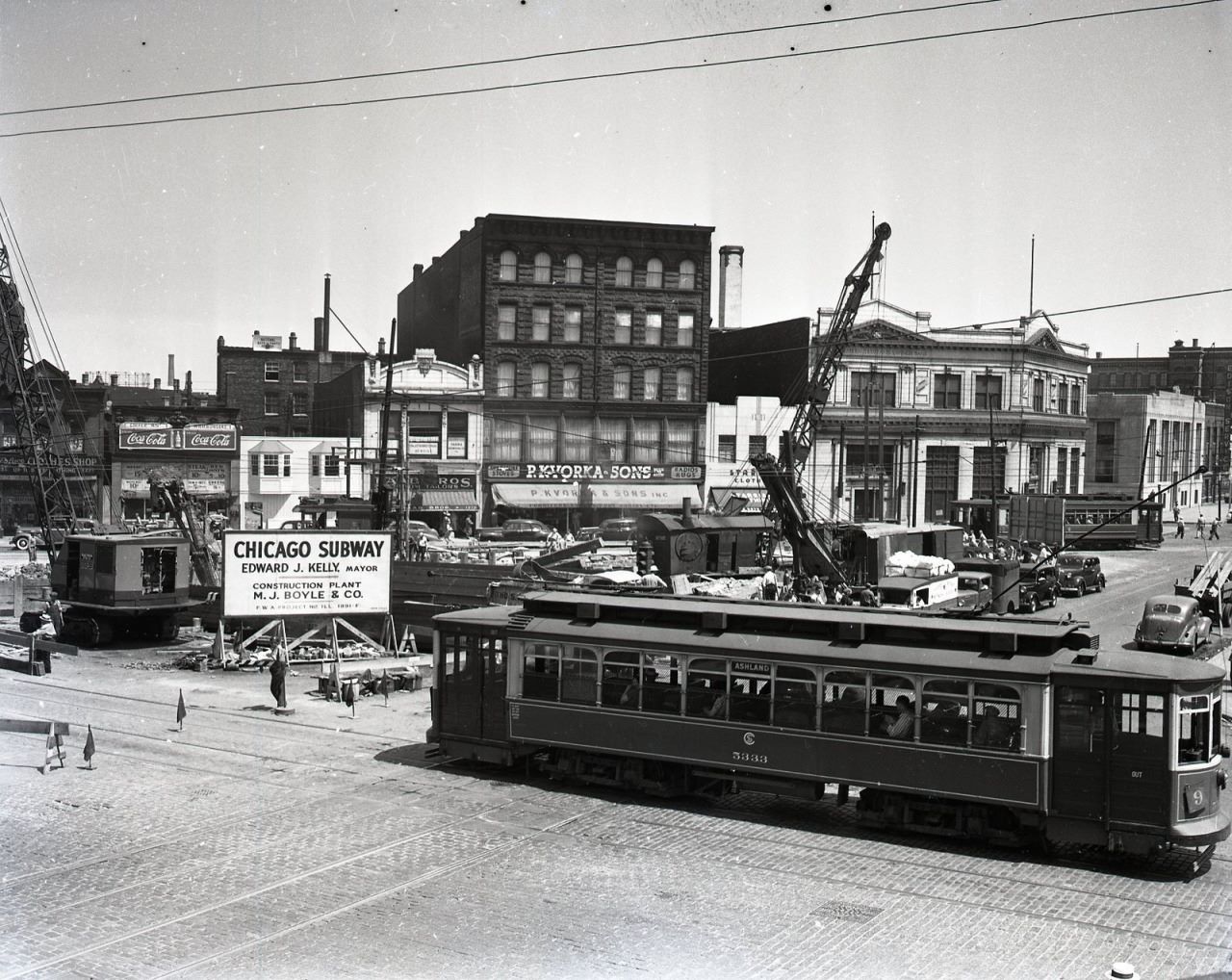
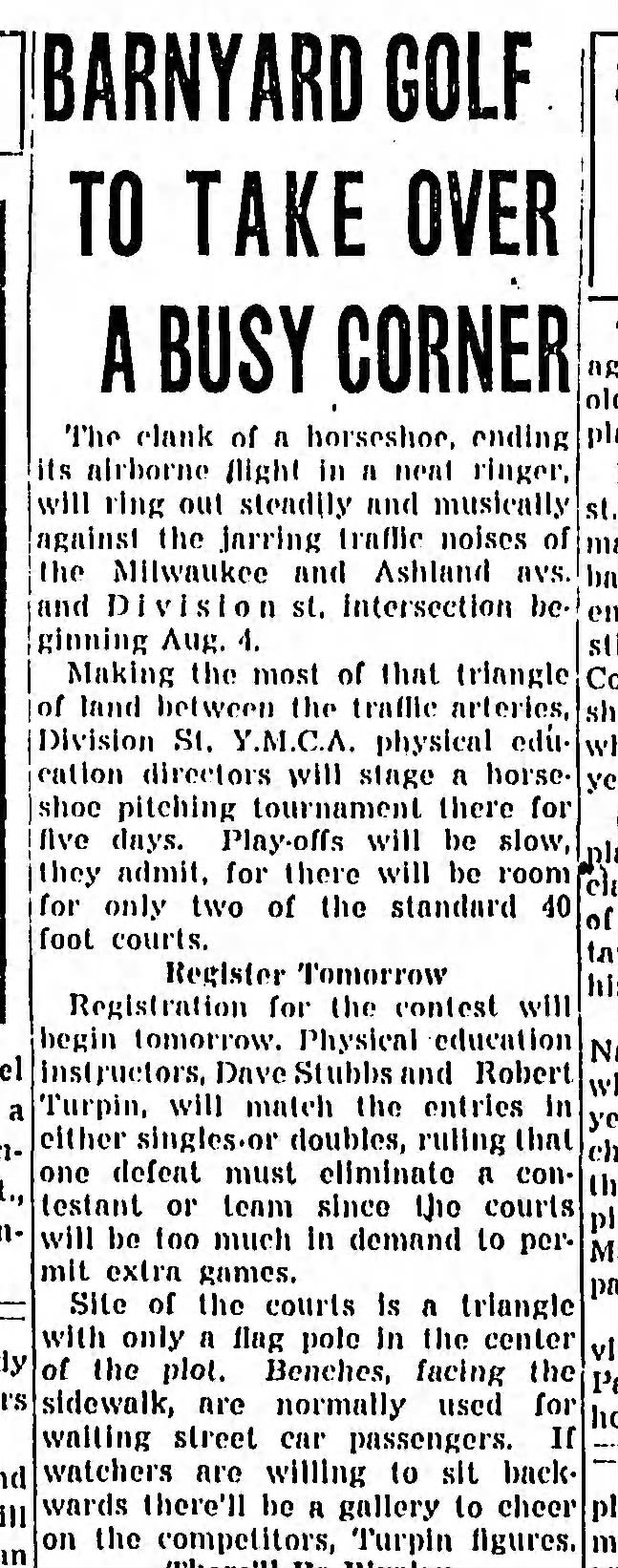
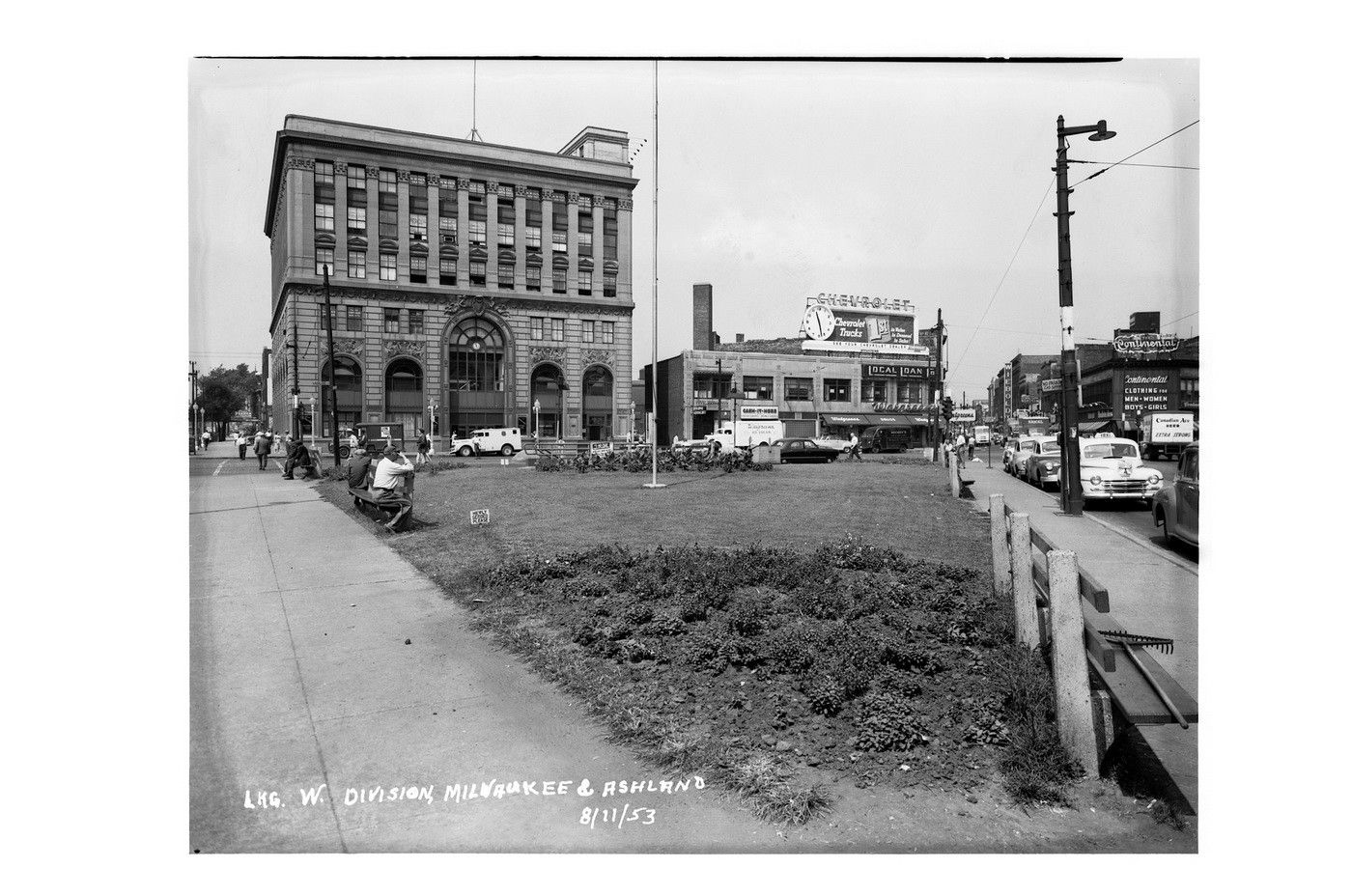
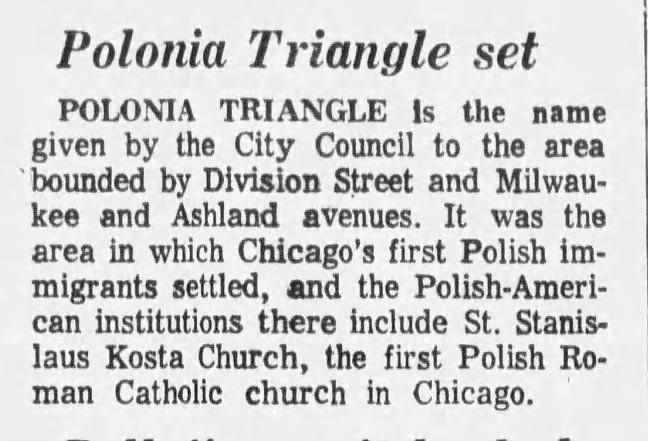
The amputation-then-demolition of the building worked out pretty well for the city. Building a new subway through downtown, the Dearborn St. Subway, the site was a perfect place for an L station, so the city eminent domain'd the land in 1939. The Division and Milwaukee Station was “approaching completion” in May 1941, but the Second World War halted work on it in 1942. It finally opened in 1951, creating the space we recognize today, and 25 years later a city council ordinance officially named it the Polish Triangle.
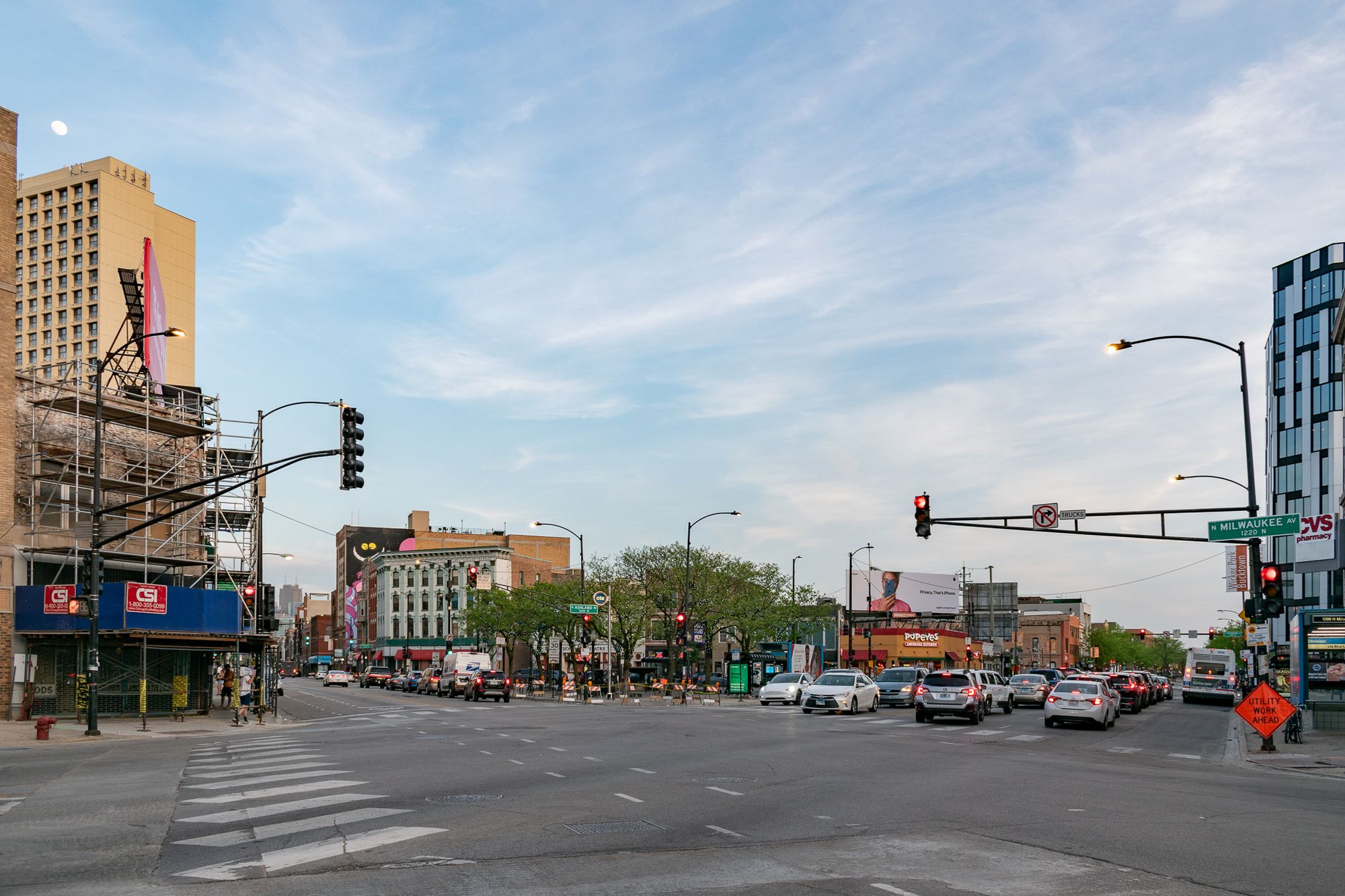
Production Files
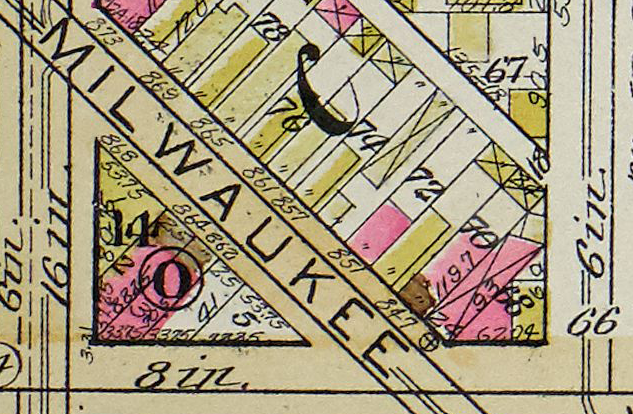
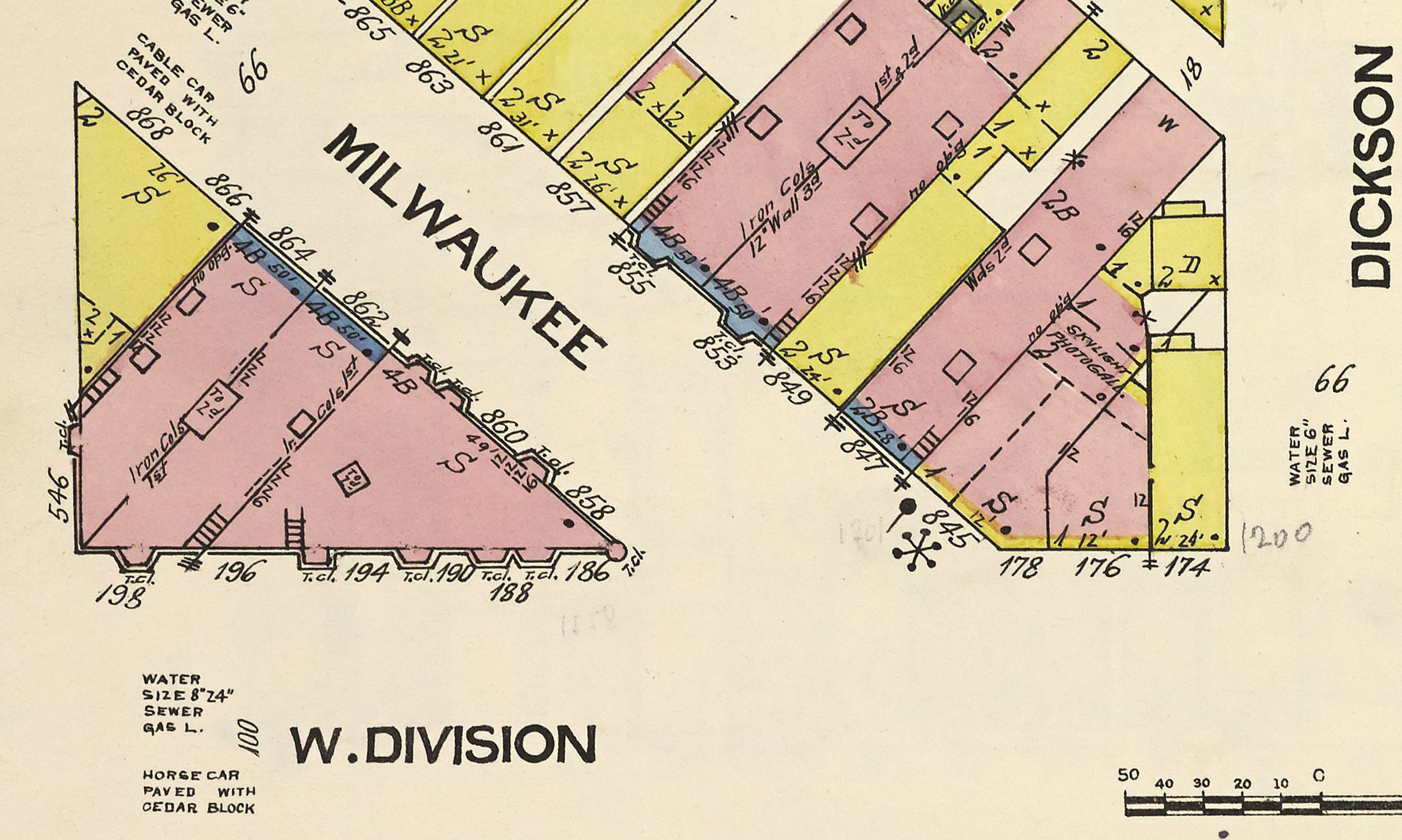
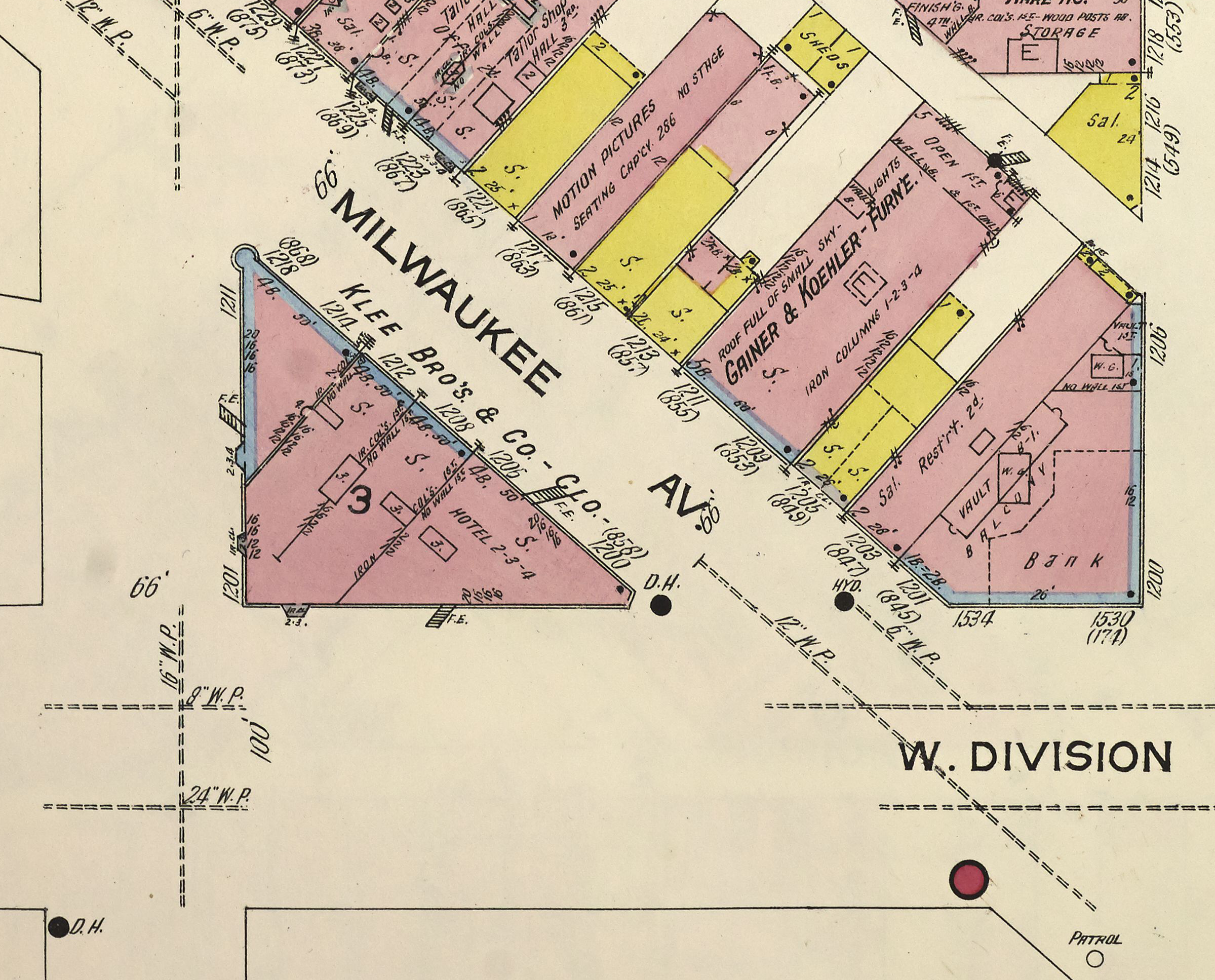
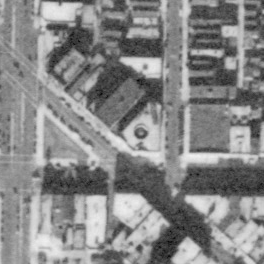

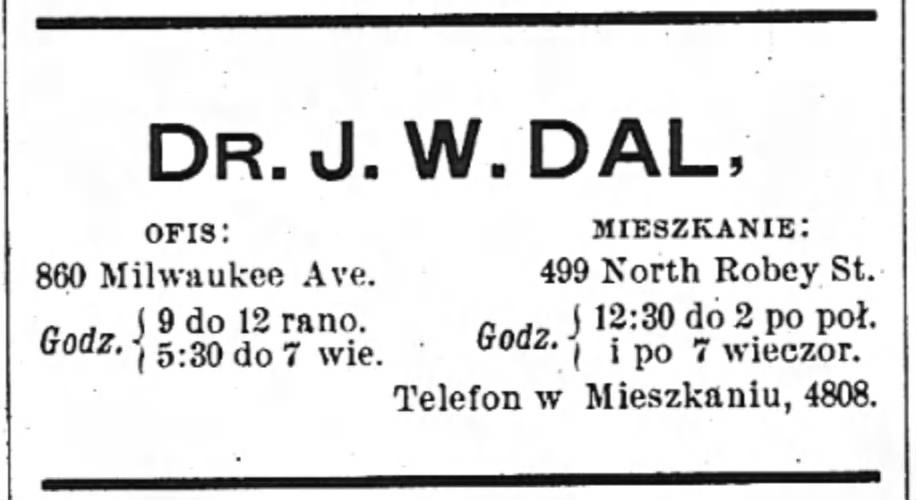





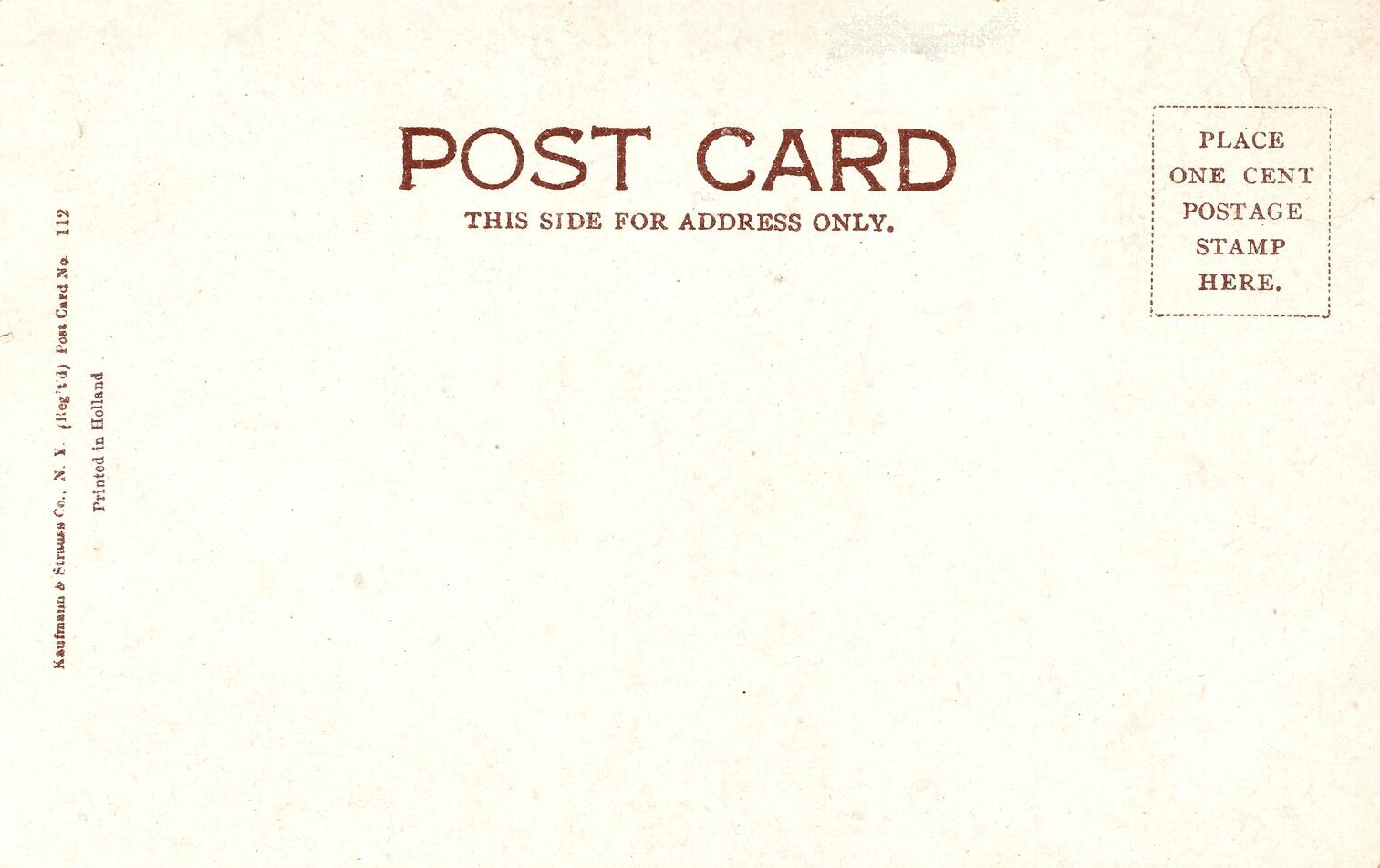

Member discussion: